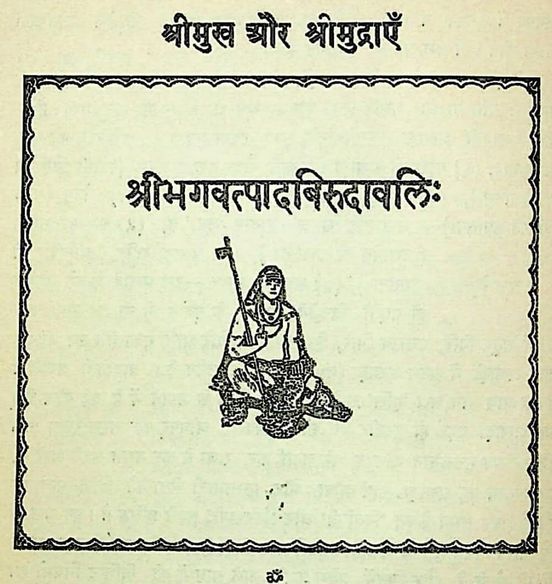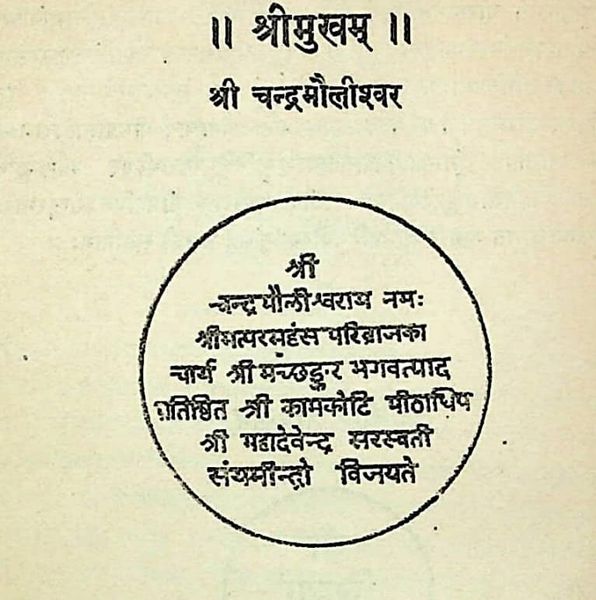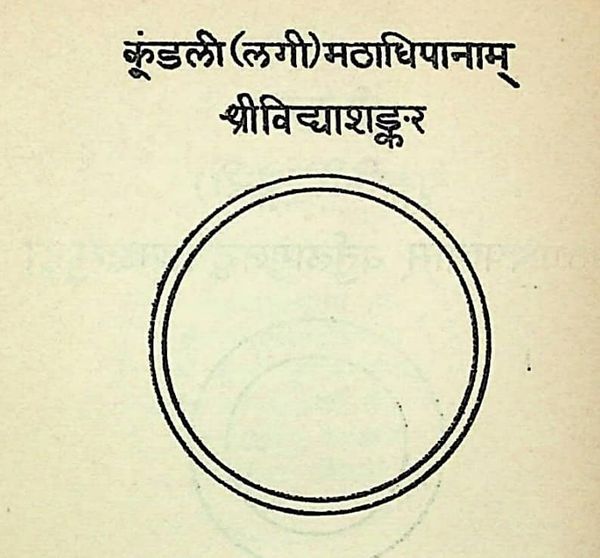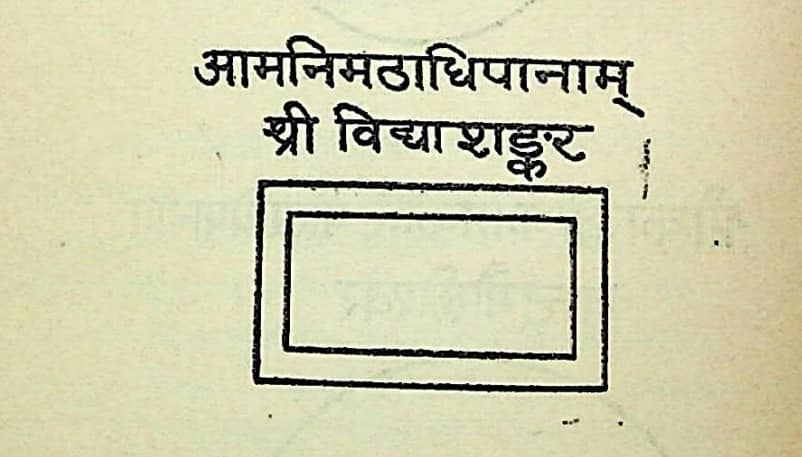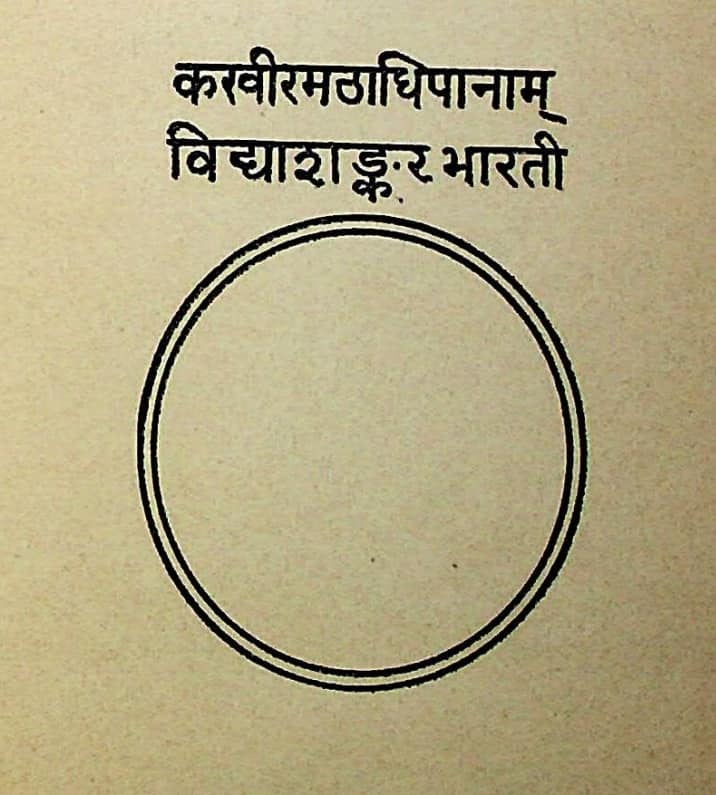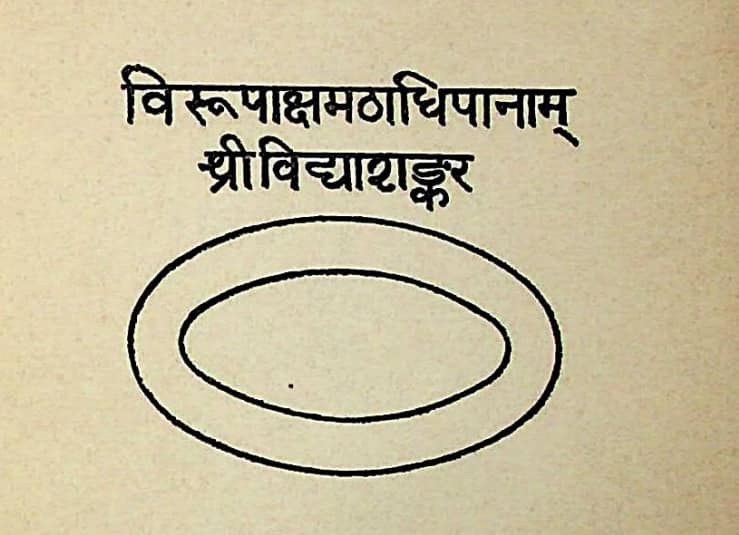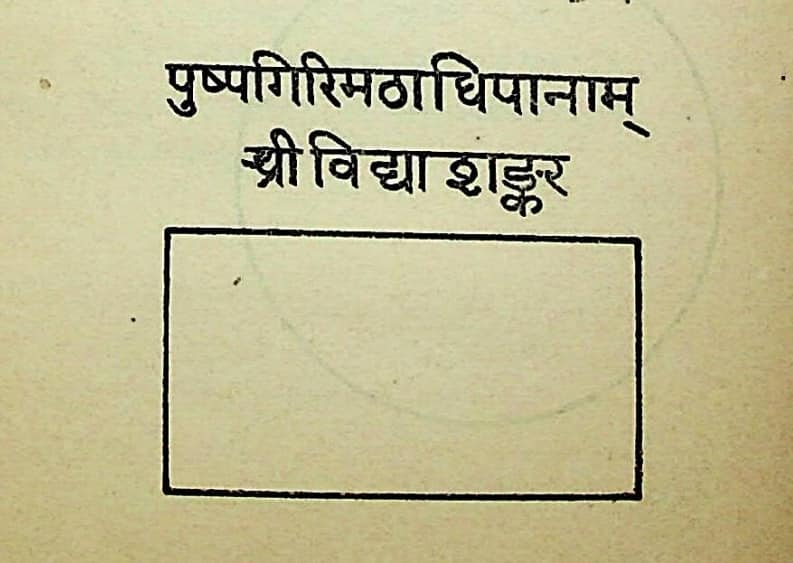Scrutiny of Srimukhas of Sankarite institutions
In the year 1871-72, a new verse was introduced in the Sringeri Almanac. The accuracy of the statement made in this verse engaged the attention of many scholars continuously for about six years.
The examination of this newly inserted verse, by scholars all over the land revealed many historical facts including an important one, i.e., that Sri Vidyaranya of the Veda Bhashya fame went to Hampi or Vijayanagar from Kanchi and after his spiritual life-work there which included the installation of the heads of Virupaksha and Sringeri mutts finally returned to Kanchi where he attained Siddhi.
The Astikas of Madras who had an organization or Sabha for determining dharmic questions and correct lapses, if any, in the community were in the habit of assembling periodically in the premises of the Madras branch of the Kamakoti Peetha at 119, Thambu Chetty Street, Madras, for the specific use of which this mutt had been dedicated by a Vaisya gentleman in the early years of the emergence of the City of Madras. The Astikas were represented by 18 Jaladhi patis, who were the accredited heads of the different communities. The meetings were presided over by an elected Sabhapati.
At one of such meetings the verse in the almanac which was intended to belittle the importance of the Kamakoti Peeta and the Kudali Mutt in Shimoga district was taken up for consideration.
The Sabhapati on behalf of the Sabha authorised Sri Gurram Venkatrama Sastri of Nellore, who had previously published some of his researches in Dharma Sastra, to consider the correctness of this sloka and make a report to the Sabha. He accordingly collected all relevant literary and documentary materials and after studying them conveyed the conclusions of his research in the form of a small booklet under the title ‘Srimukha Vyakhya’.
The method of research adopted by him was somewhat novel. He did not attach much importance to the varying literary works connected with the life and doings of Sri Sankaracharya but relied for his conclusions on the forms of honorific epithets contained in the Srimukhams and the inscriptions and in the shape of the seals of the respective mutts.
Copies of all the Srimukhams containing uniform epithets and seals were collected and every detail was minutely and meticulously examined.
The final conclusion was that the epithets and seals of all the mutts except the Kanchi Peetha, then presided over by Sri Mahadevendra Saraswati Sankaracharya Swami, pertained to the advent of Sri Vidyaranya of Vijayanagaram and Veda bhashya fame, while the epithets and seals of the Kanchi Mutt alone pertained to Sri Sankaracharya. Sri Kamakoti Peetam was established by the Great Acharya for His own residence at Kanchipuram where He attained Siddhi. The other mutts were established for or by the Sishyas of the Acharya and their parampara.
The Srimukhams collected by him pertained to the following mutts: Pushpagiri in the Andhra, Virupaksha, Kudali, Amani (Avani) and Sringeri in Karnataka and Kanchipuram in Tamilnadu.
